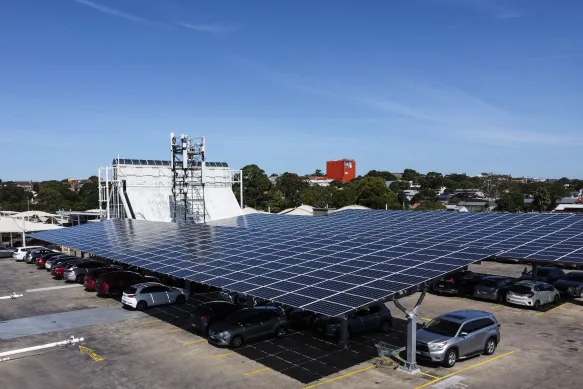Design Considerations For Effective Solar Car Shade Installations
As the world strives to transition towards cleaner and more sustainable energy sources, solar car shade installations have emerged as a promising solution that merges the benefits of renewable energy generation with practical everyday needs. These structures, often found in parking lots and open spaces, provide shade for vehicles while harnessing solar energy to contribute to the power grid. However, the successful implementation of such installations requires careful consideration of various design aspects to ensure efficiency, durability, and functionality.
Location And Orientation
Selecting the right location for solar car shade installations is crucial for optimizing energy output. Installations should be strategically placed in areas with ample sunlight exposure throughout the day. Additionally, the orientation of solar panels on the shade structure should be optimized based on the geographical location to capture maximum sunlight. Proper orientation helps enhance energy generation and ensures a better return on investment.
Structural Design And Materials
The structural integrity of solar car shade installations is paramount. These structures should be designed to withstand various environmental elements such as wind, snow, and rain. Engineers and designers must collaborate to choose suitable materials that provide both strength and longevity. Durable materials such as steel or aluminium are commonly used for frames, while high-quality solar panels ensure consistent energy production over the years.
Shade Design And Aesthetics
While the primary goal of solar shade structures is energy generation, the aesthetics of the structure also play a significant role, especially when installed in public spaces. Integrating the design seamlessly into the surroundings can enhance the visual appeal and acceptance of the installation. Architects and designers must strike a balance between functionality and aesthetics, creating structures that provide shade while adding value to the environment.
Electrical System Integration
The electrical system is the heart of any solar car shade installation. The design should incorporate efficient wiring, inverters, and electrical components to convert and transmit the generated energy to the grid or storage systems. Engineers must consider the layout of solar panels, wire routing, and voltage management to ensure a reliable and safe electrical system.
Maintenance And Accessibility
Regular maintenance is required to ensure the continued performance of solar car shade installations. Design considerations should include provisions for easy access to panels, electrical components, and other critical areas. Incorporating walkways, ladders, or platforms can make routine maintenance tasks more manageable and minimize downtime.
Cooling And Ventilation
Solar panels are most efficient when operating at lower temperatures. Designing the shade structure with proper ventilation and cooling measures can prevent overheating of panels, thereby improving their efficiency and lifespan. Adequate airflow around the panels can also enhance energy production and prevent potential damage due to excess heat.
Rainwater Management
Rainwater can be collected and managed by solar car shade installations, making them useful for more than one function. The collecting of rainwater for use in irrigation, cleaning, or other non-potable applications can be included in designs by architects and other design professionals. This environmentally friendly method complements the wide-ranging positive effects that solar panels have on the surrounding ecosystem.
Lighting And Security
The design of a solar car cover that incorporates LED lights can provide additional benefits, such as increased visibility and security when used during the evening and midnight hours. The installation’s overall sustainability aims should be matched with the lighting design, and it should use as little energy as possible to achieve those goals.
Conclusion
Designing effective solar car shade installations is a multidisciplinary endeavour that requires careful consideration of various factors. From location and orientation to structural design, electrical integration, and aesthetics, each aspect plays a vital role in the success and sustainability of these installations. As technology evolves and awareness of renewable energy grows, meticulous planning and innovative design will continue to shape the future of solar car shade installations, contributing to a greener and more energy-efficient world.




